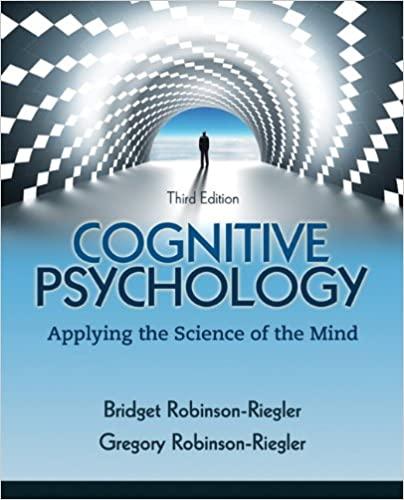Question
I need help responding to my peers 1. Andre said? The three elements of persuasion or a persuasion are as follows, Ethos, Pathos and Logos.
I need help responding to my peers
1. Andre said? The three elements of persuasion or a persuasion are as follows, Ethos, Pathos and Logos.
Logos is defined as the "logic, words and reasons for an argument" (Tracy, B.,(2019). Logos represents the word play, or the building blocks of an argument, to use a physical illustration if one was constructing a new home in which to live, words would be foundation and the frame upon which the house was being built. Another example would how preachers use words to build a exciting and intentional message. If logs represents the frame and foundation then I believe Ethos would represent the guts of the inside of the house, the walls and the floor upon which those that live in the house move and navigate it. Ethos is defined as the "character, ethics and believability (Tracy, B., (2019) of an individual when they speak. Ethos connects to what the hearer believes about the communicator and their message. The final persuasion Pathos is defined as "the emotional content of a presentation" and represents the speakers ability to connect on a personal and emotional level to those to whom they are speaking to. In the example of the house Pathos would be the visible representation and design of the house that connects to those living in it on a deeper personal level and makes what is being heard valuable and important. Regardless of how well someone speaks, if the hearer cannot connect on a personal level to what is being said it makes the message pointless no matter how true or precise. As a preacher this I believe is the most valuable tool in preparing a service, as it connects the why of the message to the individual and elevates the message to one of personal importance instead of just important.
2. Lucinda said? Self-validation theory in regards to persuasion suggests that confidence in one's own thoughts could conceivably increase or decrease attitude change depending on the nature of the thoughts elicited by the persuasive communication, (Petty RE et al.(2002). Self-doubt and emotional arousal can also influence whether we are persuaded by our thoughts. For example, emotional arousal from a marketing ad can persuade our thoughts to be more positive. Self-doubt can inhibit our persuasion to believe in our thoughts. When we have thoughts of self-doubt a a new project can become invalid. Another example that can influence our thoughts and influence persuasion is the credibility of the source. We are more apt to be persuaded by a well-trusted company or individual. What we deem to be valid or invalid plays an important in our thoughts and influences persuasion.
Step by Step Solution
There are 3 Steps involved in it
Step: 1

Get Instant Access to Expert-Tailored Solutions
See step-by-step solutions with expert insights and AI powered tools for academic success
Step: 2

Step: 3

Ace Your Homework with AI
Get the answers you need in no time with our AI-driven, step-by-step assistance
Get Started


